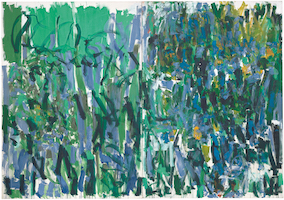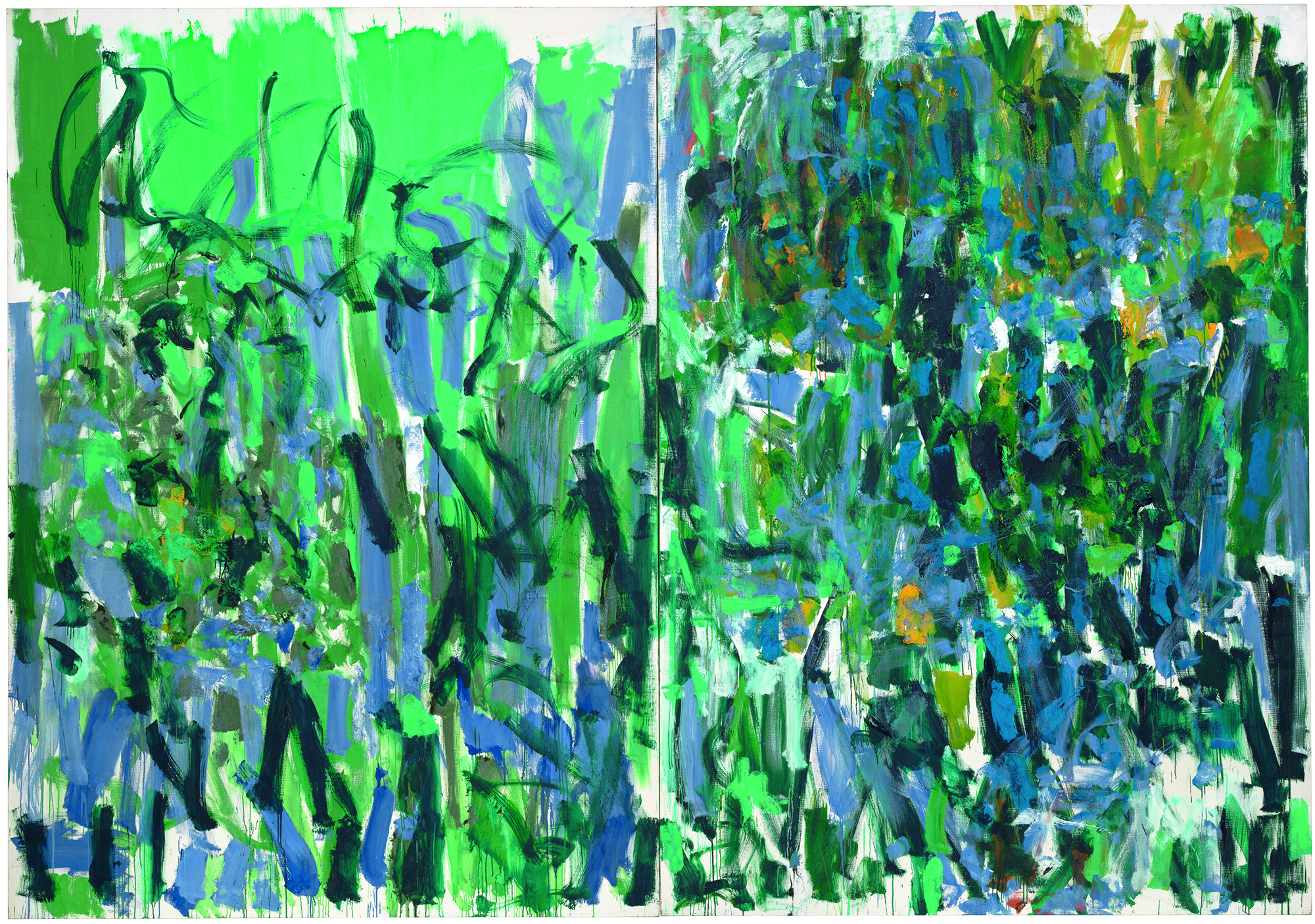
BALTIMORE, Md. — The Baltimore Museum of Art (BMA) presents Joan Mitchell, the long-awaited retrospective of the internationally renowned artist who attained critical acclaim and success in the male-dominated art circles of 1950s New York, then spent nearly four decades in France creating breathtaking abstract paintings that evoke landscapes, memories, poetry and music. This comprehensive exhibition features 70 works spanning the artist’s career, including early paintings and drawings, vibrant gestural paintings that established her reputation in New York, and enormous multi-panel masterpieces from her later years that immerse viewers with their symphonic color. Numerous loans from public and private collections in the U.S. and Europe include works that have not been shown publicly in decades and never in a single exhibition. The BMA’s presentation also includes many archival photographs, letters, poems and other materials from the Joan Mitchell Foundation, providing additional context about the development of the artist’s work and influences. The show is currently on view and will run through August 14.
Co-organized with the San Francisco Museum of Modern Art (SFMOMA), Joan Mitchell is the result of more than three years of research and first-hand review of hundreds of paintings by exhibition co-curators Katy Siegel, BMA senior programming and research curator and Thaw chair of Modern art at Stony Brook University, and Sarah Roberts, Andrew W. Mellon curator of painting and sculpture at SFMOMA. They were supported by research teams from both museums and Stony Brook University, as well as a dedicated fellow funded by the Joan Mitchell Foundation. The exhibition and its accompanying catalog have established a new depth of scholarship and understanding about Mitchell’s work as a transnational artist, as well as her profound impact on the trajectory of art.
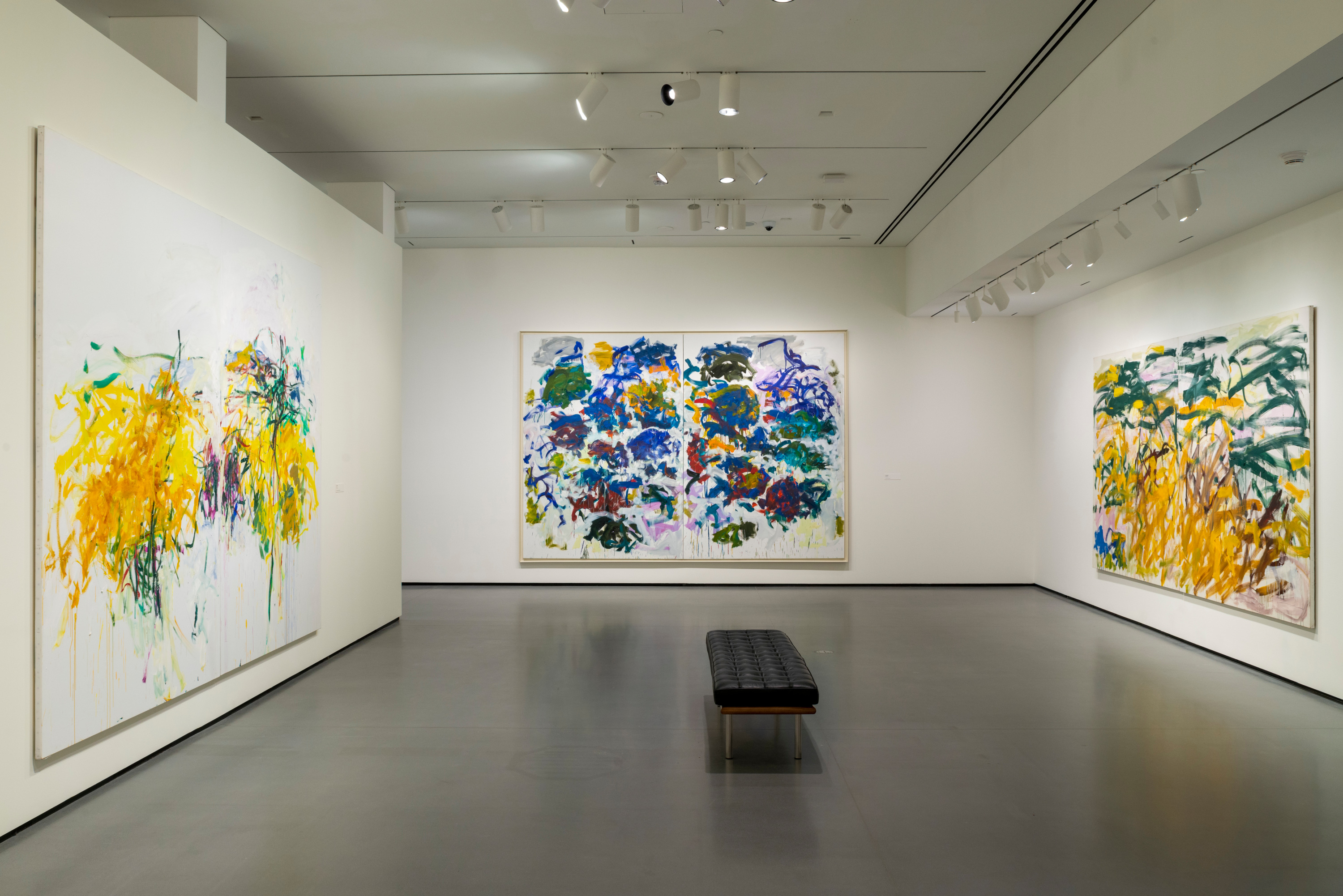
“Across her life, Joan Mitchell experimented with how painting could embody physical experience and capture a wide range of emotions — including grief, sensual pleasure, humor, joy and a kind of metaphysical soaring in the face of death — as well as connections to people and places,” said Siegel. “Mitchell also grappled with conflict between the social roles prescribed by her gender and social status and her desire for true creative freedom. She was not simply ‘making it’ in an environment created and occupied by men, she was actively remaking painting and its possibilities. This exhibition is an opportunity to ask what it means to live a life with art at its center and to reconsider the art and narratives of the postwar era.”
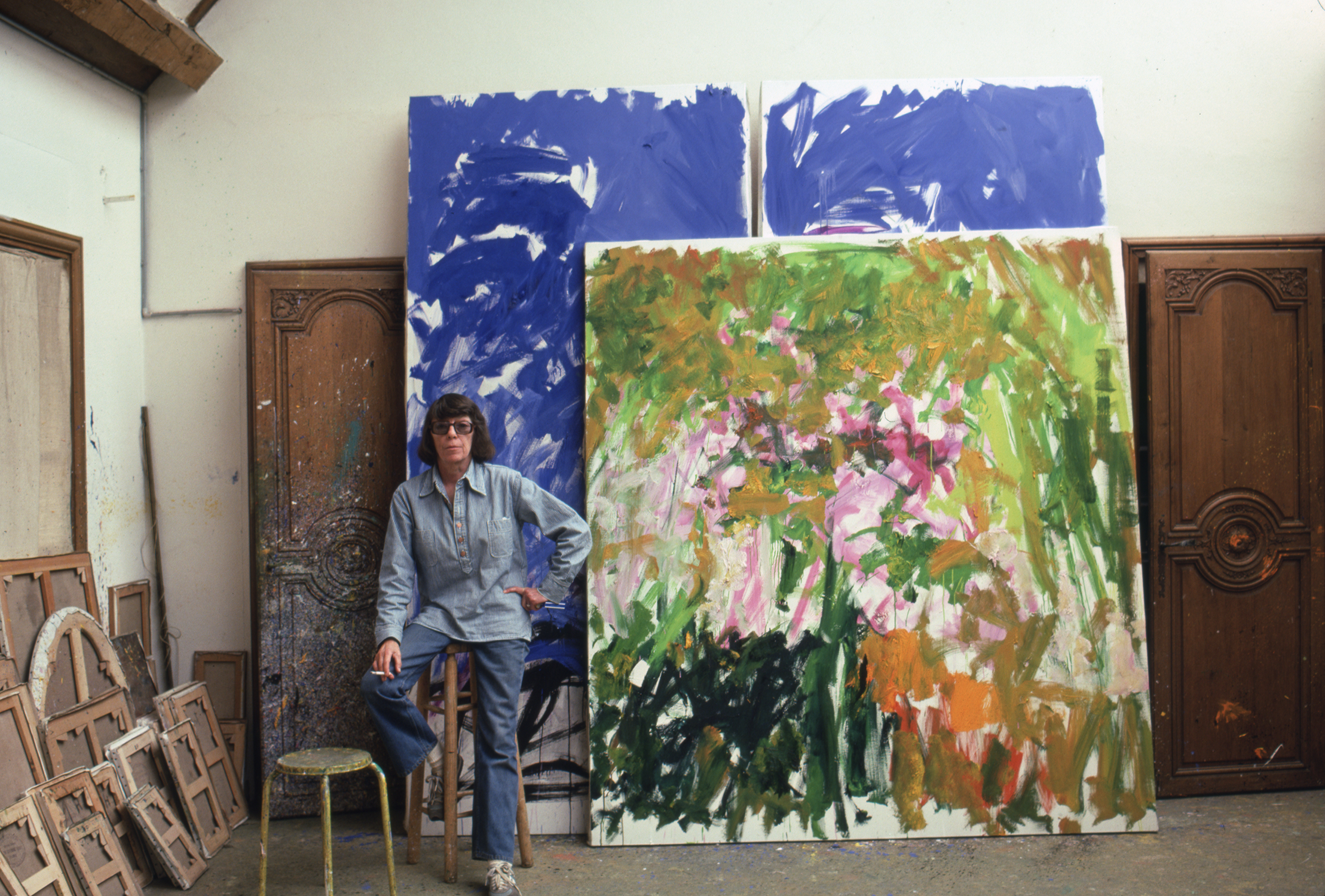
Throughout her extensive career, Mitchell immersed herself in color and gesture in her studio, and was also deeply grounded in place and landscape, resulting in a singular style of painting that is at once abstract and connected to the world. Her works share evocations of feeling, as she physically expressed the sensations aroused by relationships; memories; the cities Chicago, New York, and Paris; the countryside of the Mediterranean; and Vetheuil, the French village where the artist made her home.

The power of this approach can be seen in her vibrant articulations of urban environments in New York City in paintings such as The Bridge (1956) and To the Harbormaster (1957), lush French landscapes such as South (1989), and works that engage with the legacy of Vincent Van Gogh, such as No Rain (1976) and Sunflowers (1990-91). Photographs of views and other paintings that inspired Mitchell will be shown alongside her paintings, capturing the way she connected to the natural world and to everyday life.
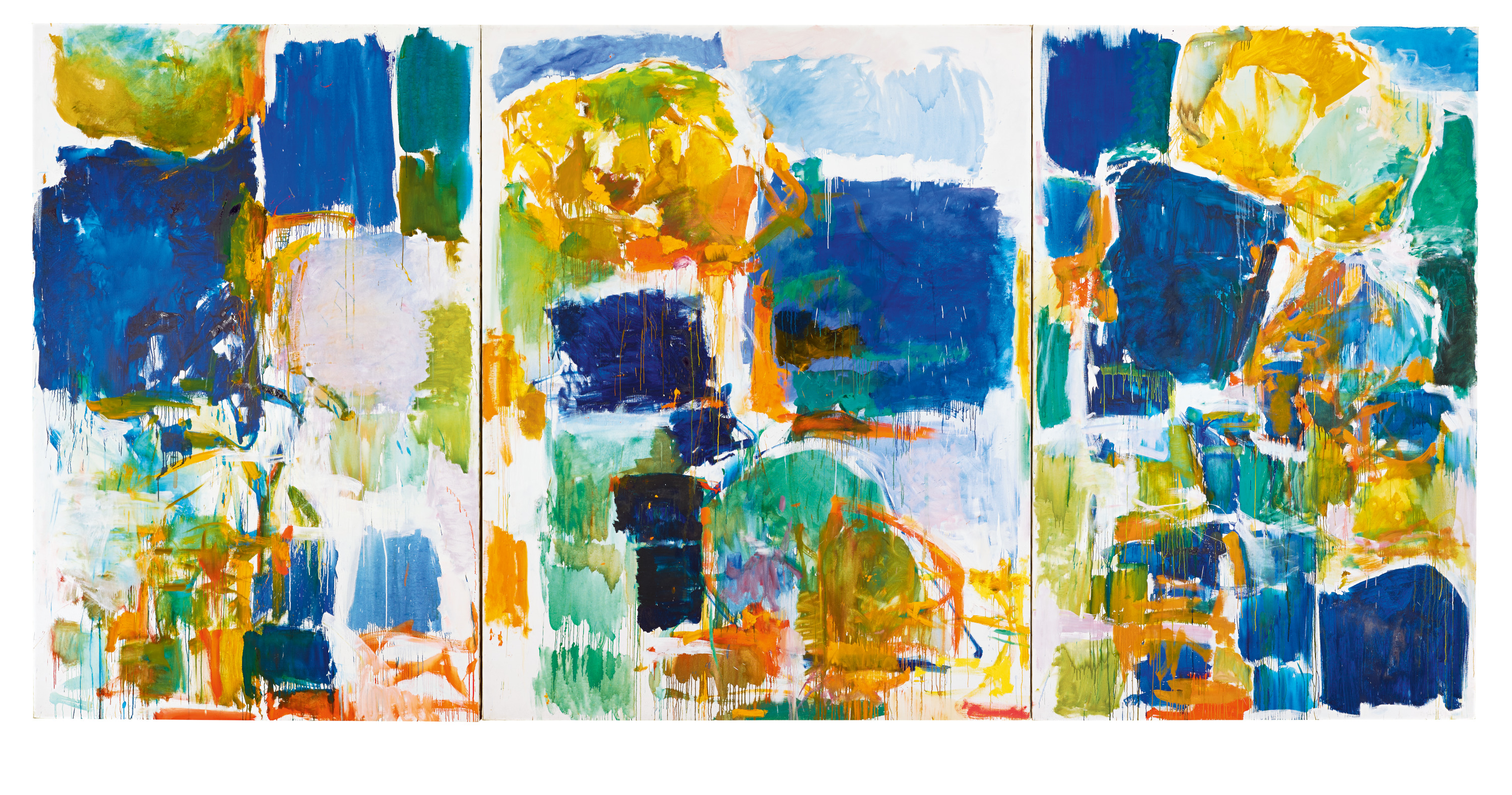
The exhibition also examines the essential role of music and poetry in Mitchell’s work. Immersed in culture from childhood, Mitchell’s personal and collaborative relationships with writers and musicians in both the U.S. and France are key to her story. As her artistic style developed, the sometimes ambiguous and often personal nature of lyrics, lines of poetry and musical compositions dovetailed with painting’s capacity to express what cannot be named or explained.
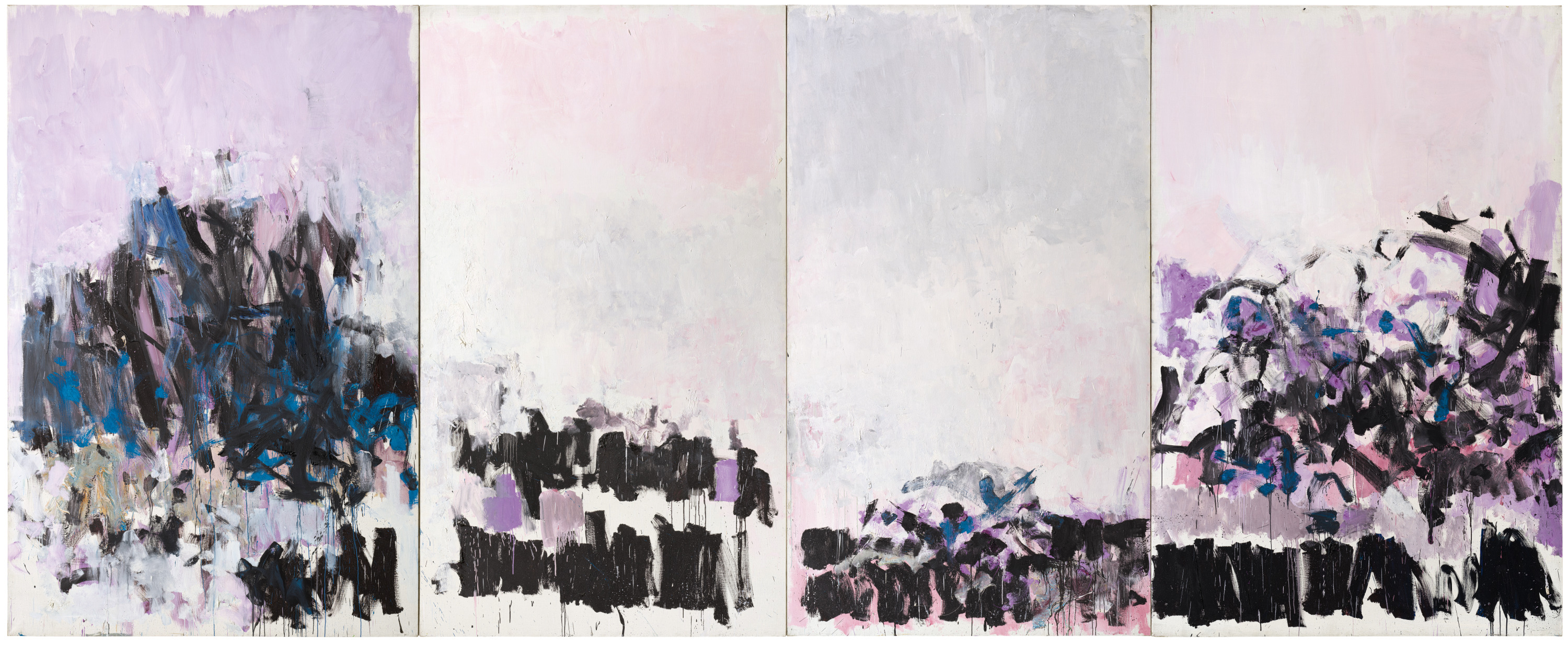
Two multi-panel paintings, Ode to Joy (A Poem by Frank O’Hara) (1970-71) and La Vie en Rose (1979), demonstrate the relationships between Mitchell’s passion for the arts across its many disciplines and the way it propelled her practice. The BMA’s exhibition emphasizes this with an immersive soundscape featuring quotes taken from Mitchell’s writing and interviews voiced by actor Nadine Malouf, literature significant to the artist read by poet Eileen Myles, and music dear to Mitchell, from jazz standards to opera. The experience is optimized for headphones in the gallery and accessible for visitors through an app on their mobile device or a player borrowed from the museum.
Visit the website of the Baltimore Museum of Art and see its dedicated page for Joan Mitchell.


